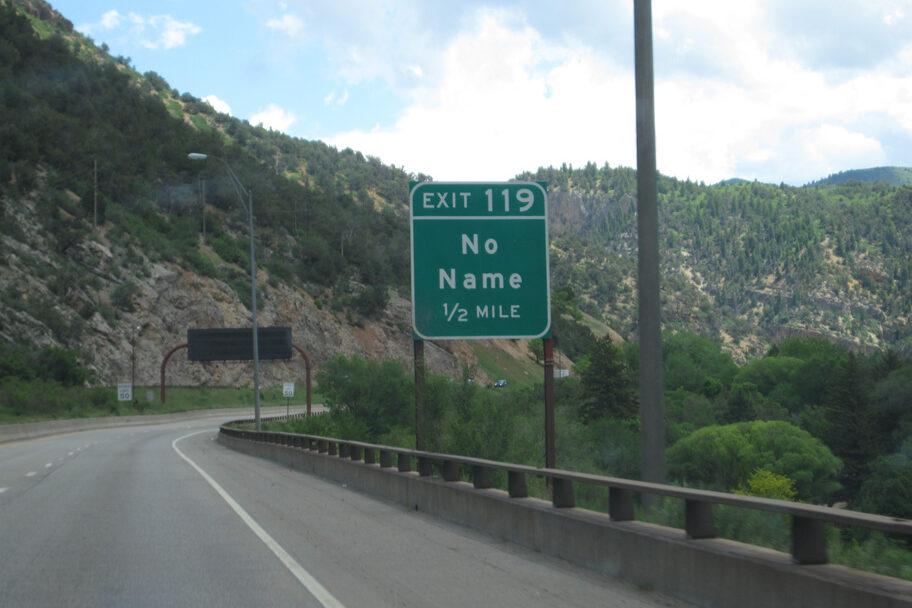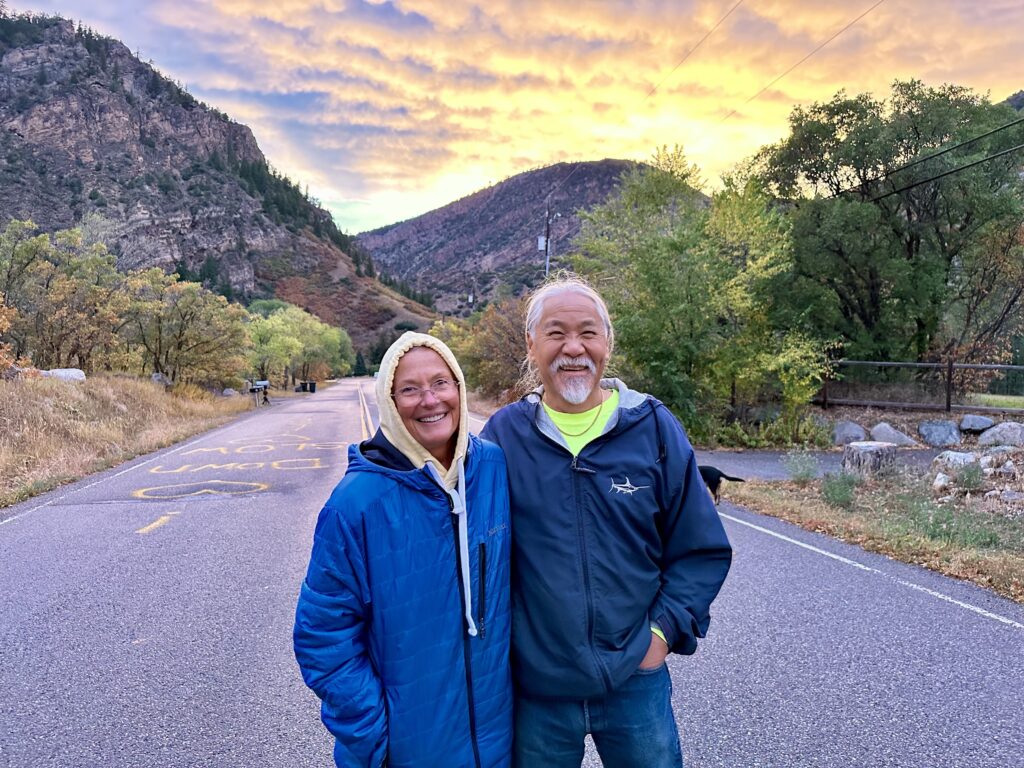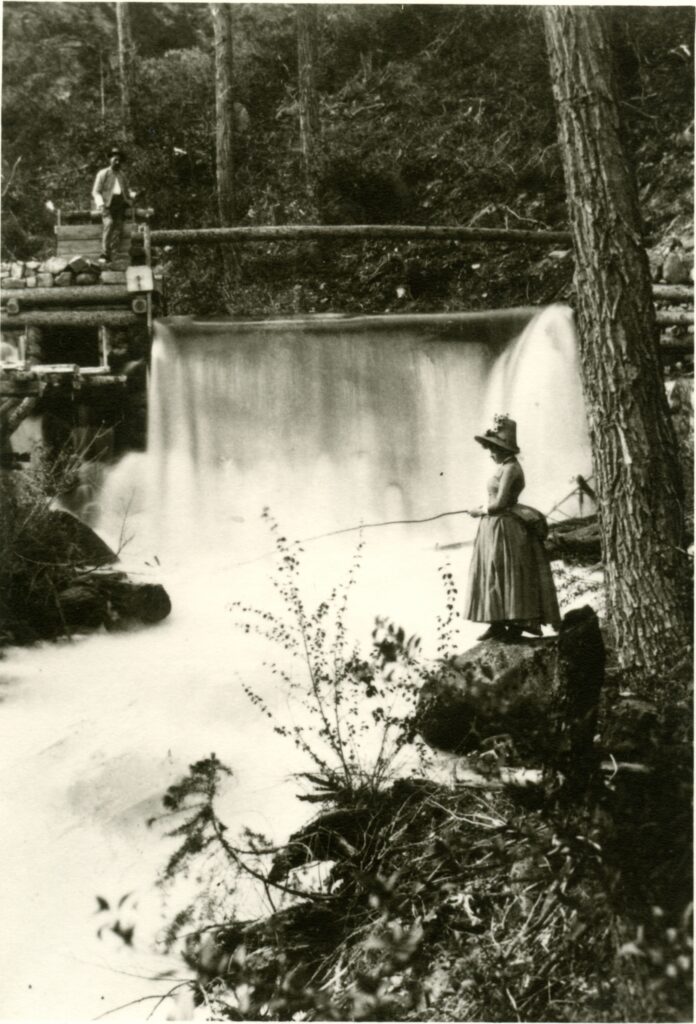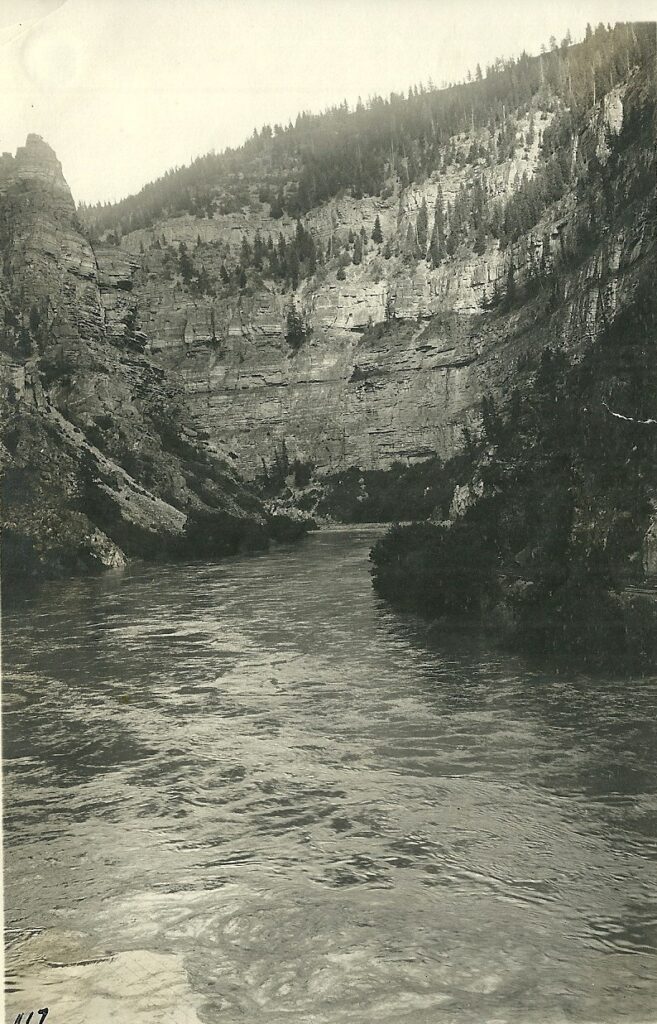
Golden resident Kelly Behm remembers driving past the plunging rock cliffs of Glenwood Canyon just outside of Glenwood Springs when she saw it: the sign for Exit 119. On it was the name of a tiny community on the Colorado River she had never heard of — and instantly could not forget.
No Name.
“And I just thought, why No Name? Why would you keep the name No Name? Where did that come from?
So she decided to ask Colorado Wonders.
No Name has a rest area, an RV resort and a quaint collection of homes. It’s not far from No Name Canyon and right next to No Name Creek.
The main road? No Name Lane. That’s where Sean and Greg Jeung live, self-described No Namians.

“I've heard that rafting guides will tell a story about an Indian tribe or a Princess No Namay or whatever,” Greg said.
Maybe the creek was named first, Sean added. “And maybe No Name Creek was named No Name Creek because when the surveyors were surveying, that creek had no name.”
“Then I also like to say we're aliens from the planet No-Na-May,” Greg joked.
And if that wasn’t confusing enough, there’s also the hypothesis that No Name was sort of randomly assigned to Exit 119 by the Colorado Department of Transportation, back when Interstate 70 was built in the early 1990s.
For archivist Carolyn Cipperly, with the Glenwood Springs Historical Society, many of these No Name hypotheses are pretty easy to debunk.

“There were people living there as early as 1874,” she said, sitting in a basement that smells of old books and manuscripts at the Frontier Historical Museum.
Cipperly can find old receipts and maps showing that for generations and generations, the community’s name was No Name, long before the No Name exit sign — or even the interstate — was built.
“Before CDOT was ever a sparkle in the state’s eye,” she said, with a laugh.
Cipperly has also heard the rumor that the name could have come from a census sent out to residents, where the government asked them what they called the place.
“And everybody just said ‘no name,’ like there wasn’t any,” she said. “Another theory is that the creek was called No Name first. And the town was named after that.”
That last one, which echoes Sean Jeung’s guess, sounds pretty likely to Cipperly, but that still doesn’t explain what inspired the name No Name in the first place.
That’s history for you. Cipperly gets unanswerable questions “all the time,” she said, “and some people will tell you a definitive answer without really being able to prove it. And I just, I can’t.”
Luckily, our Colorado Wonderer has another question, too:

“Has anyone ever tried to rename it,” Kelly Behm said, “and why keep the name No Name?”
Apparently, there were efforts to change it sometime in the past, including a bid to call the area “Cobblehurst,” after a well-known home in the community. But no name except No Name stuck.
That doesn’t surprise Greg and Sean Jeung, sitting with tea in their large backyard as the cool evening rolls in and the walls of Glenwood Canyon get darker.
“No, I wouldn’t want it to have any other name,” Sean said, her husband adding he didn’t think many others around there would, either.
No Name is both part of Glenwood Springs and also its own world. A “sanctuary,” Sean called it, where their large Thanksgiving dinners have become famous and where during COVID, the community held a sign over the highway saying “HONK FOR HOPE.” This is where Greg went through a huge health scare a few years back, and then felt the support of his neighbors as they rallied around him.
“I’m sure for a lot of people it’s odd to have a place called No Name,” Greg said.
But for No Namians, it’s just home.








